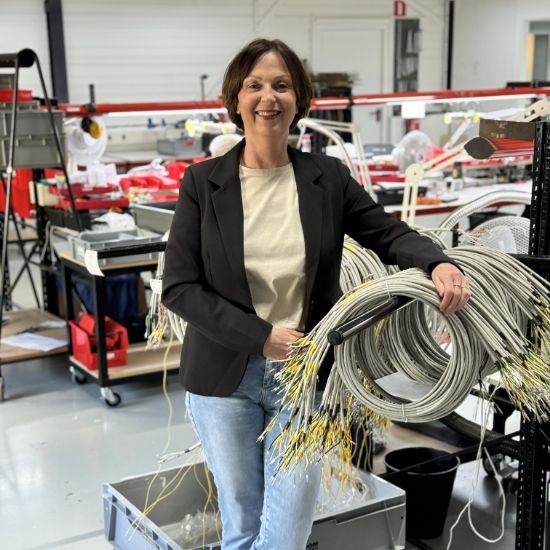We have been assembling servo cables for machine builders at home and abroad for many years. These servo cables are intended for the precise drive of electric motors. The drive is usually controlled with frequency converters. This places high demands on the servo cable and the connectors. That is why we are happy to support you with the design and assembly of drive cabling. Please contact us and challenge us.
Call me back
Wondering if we can do something for you? Leave your details here and we will call you back as soon as possible. Of course, you could also fill in the contact form.
Flexible servo cables
A common application for servo cables is in a cable tray. Such a flexible cable tray protects the cabling, but also moves easily with the machine or robot. An important point to consider when designing a servo cable is the bending radius of the cable in relation to that of the cable track. The bending radius of the cable tray may not be smaller than that of the cable. Because such a cable moves frequently, or perhaps continuously, we do not use just any motor cable for this reason either. Other criteria include length, acceleration, thermal behaviour and shielding.
Servo cables and EMC
The use of frequency converters easily causes electromagnetic interference (EMI), i.e. interference from the cable to the outside. That’s why servo cables are extra well shielded to keep the high frequencies inside the cable sheath and thus comply with the EMC standard. Important here is that also the connectors are designed for EMC and that the shielding of the cable is well finished. With the MCAP cabling specialists, you don’t have to doubt about this.
Insulation material crucial factor
The insulation of a cable has more to do with its function than protecting against contact. The type of material used for the insulation around the conductors also determines the electrical capacity of the cable, and this must be low at high frequencies, such as in servo cables. For this reason, we at MCAP only use high-quality cables and connectors for drives. This way, you don’t be at risk of running into the electrical limits of the frequency converter.
Difference between servo cable and motor cable
Apart from the fact that servo cables almost always have a general shielding against EMI around the conductors, the most eye-catching difference is the colour. Motor cables usually have a black outer jacket while servo cables are usually orange. The number of conductors is also an important difference. A typical motor cable has four conductors to connect to the three phases and ground. This is sufficient to operate a three-phase motor.
However, some electric motors have additional connections for a temperature sensor or a built-in brake. When using a regular motor cable, these are connected to the terminal box of the motor via a separate cable. Servo cables already have additional conductors for this purpose, so a separate cable is no longer necessary.
Circular connectors
Servomotors are usually connected with circular connectors. These shielded connectors have the four contacts needed for supplying power to the motor, but also for connecting temperature sensors and brakes if necessary.
Do you need help with engineering of servo cables or are you looking for a reliable partner for their assembly? Then contact us without obligation and challenge us. It could be that we come up with an even better solution.


